As much as I love my larger plants here at HOUSE PLANT HOUSE, houseplant propagation is a real hobby of mine. I don’t know if it’s the lure of making new plants for free, or that the process feels like I’m getting to understand how my houseplants ‘work‘… whatever it is, I’m forever fascinated with propagating something! I’m updating this blogpost that I originally wrote in January 2020 with some more detailed information to answer some of your propagation questions I have been getting on instagram.
Let’s be honest, winter plant care can sometimes be a rather uninspiring activity when the days are pretty dark + gloomy, some plants are dormant + some might be struggling. So as the colder months approach, I like to take cuttings of any plants that need a trim, or are not doing so well + root them. I think of it as a way of making a ‘back up’ plant or two just in case! Yes, this process is slower during the colder months, but it still works — it’s just a practice of patience.
I’ll start by reiterating that plant care is a very personal process + so too is plant propagation. I mentioned in my mindful approach to keeping houseplants blogpost that the best way to enjoy your houseplant hobby is to be driven by what plants you like growing + not what is popular online.
Furthermore, the choice of whether you like to propagate your plants in water or soil, perlite or sphagnum moss is an entirely personal choice. I don’t think a ‘one size fits all’ approach to plant care is a useful way of thinking about things. I will continue to share how I do things, which is actually different depending on the plant; I use all 4 options as I mentioned above for different reasons. For example; I like to use soil propagation for some of my foliage plants like my golden pothos or pilea peperomioides, straight perlite for my rosette succulents like echeveria, sphagnum for my jewel orchids + philodendrons + water prop for a whole variety of things. I’ve said many times before that I enjoy the process of water propagation + it’s a great way to observe how different houseplants behave + the different types of roots too! I know some people don’t like water propagation + prefer to put their cuttings straight into potting mix + that’s fine too.
You can decide what works best for you + over time you will develop your own preferences; often depending on your lifestyle + household conditions. It is inevitable that there are champions of each method (especially on social media) but with so much conflicting advice, it can lead to confusion + the feeling that you are ‘doing it wrong‘. I encourage you to find what works for you + what you enjoy — it’s meant to be a hobby after all!
Sansevieria / Snake plant propagation
The two plants I often get questions about propagating when I post them on social media are my Sansevieria (Snake plants) + Zamioculcas zamiifolia (ZZ’s), so I thought I’d show you the process in some more depth. At the end of the post I’ll share my general propagation tips, but first, some progress photos of my plants…

Snake plants (or ‘mother-in-laws tongue’/ sansevieria/ reclassified as dracaena) were a new propagation experiment for me in 2019 as I had a few stems hanging around after repotting my dad’s plant over the Summer which I started rooting in September. I also repotted one of my larger Sansevieria plants a few weeks ago + found that one of the stems felt a bit soggy. They can sometimes rot at the base or go into to a bit of a shock after being repotted but as it was just one stem, I wasn’t too worried. If you notice this early on there is a chance you will be able to still root the stem — just cut a few inches above the damaged area. It is worth saying however that it is always best to take cuttings of healthy plants. Here it is — no sign of roots yet:
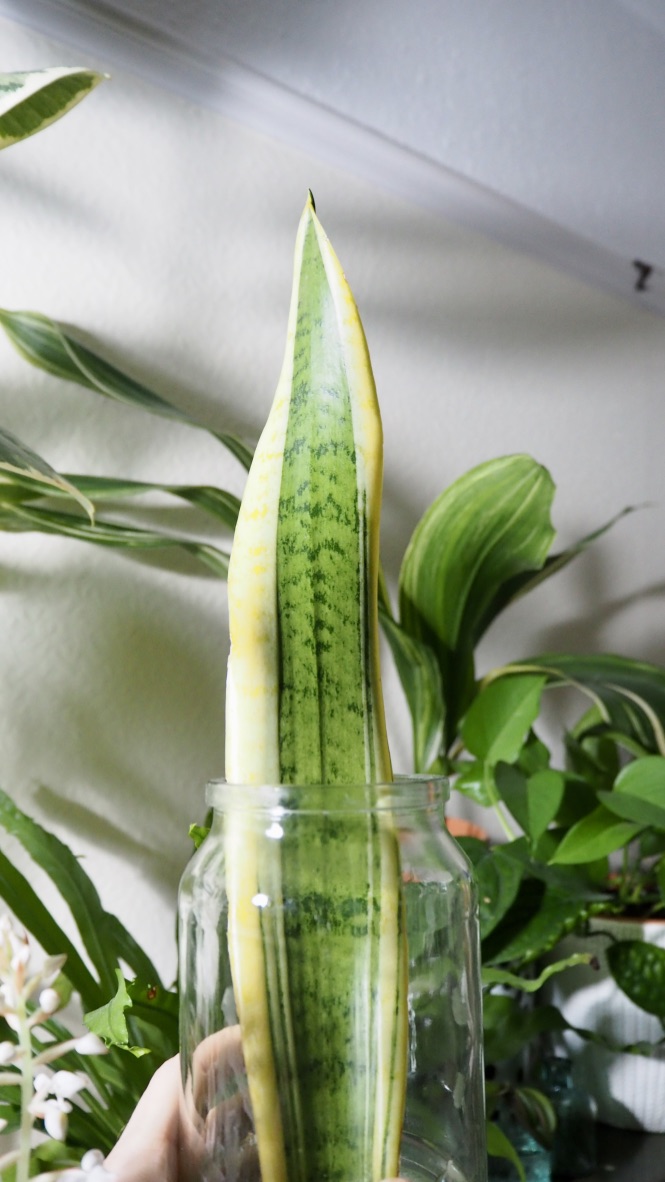
The most important thing with succulent stems such as these is that you should leave the cut end callus over (seal over) adequately before putting in water. This is a game changer in getting your cuttings to root without rotting — I generally wait around 5-7 days but sometimes longer in winter. That reminds me, I took a photo before I popped this in water. I’ll try find it in my plant photo archive!
These are my smaller cuttings I chopped in September that I photographed on November 3rd:

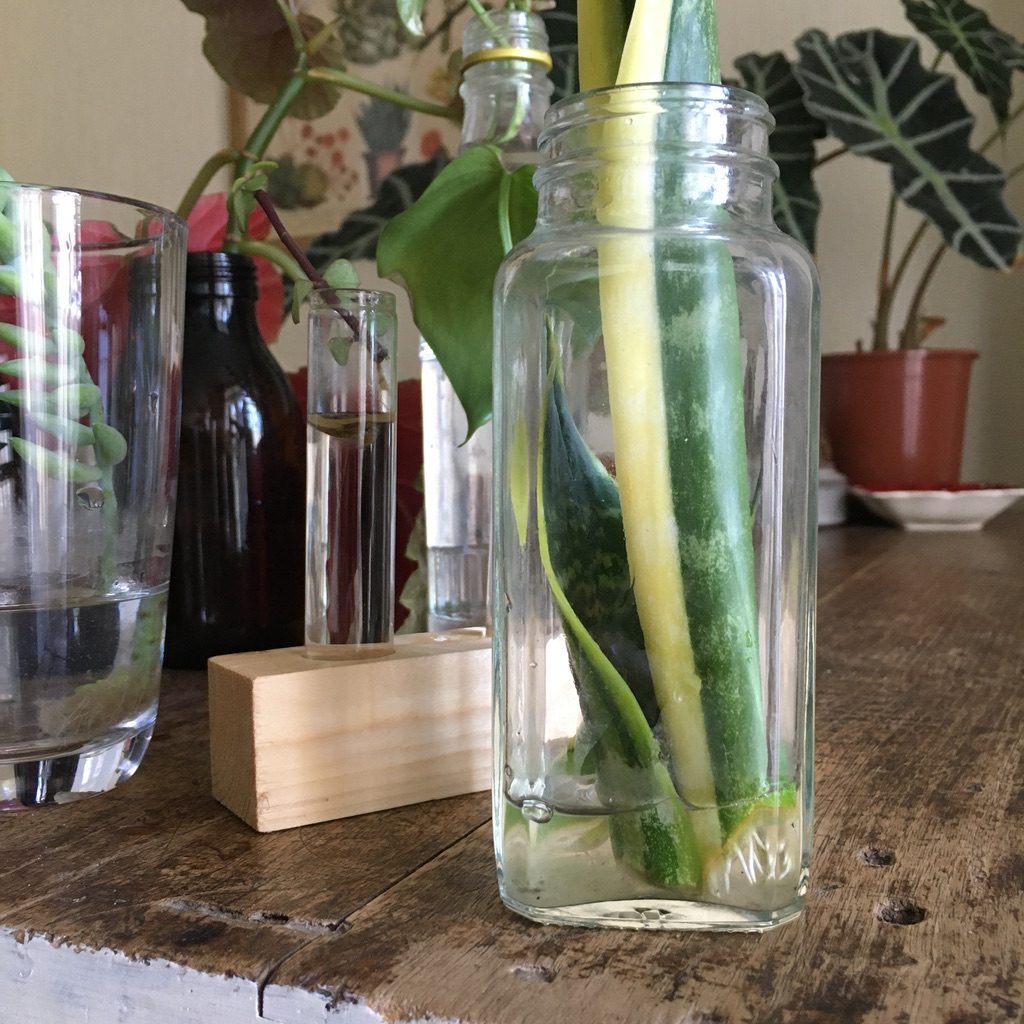
Here’s a visual guide of how to take leaf cuttings of your sansevieria:
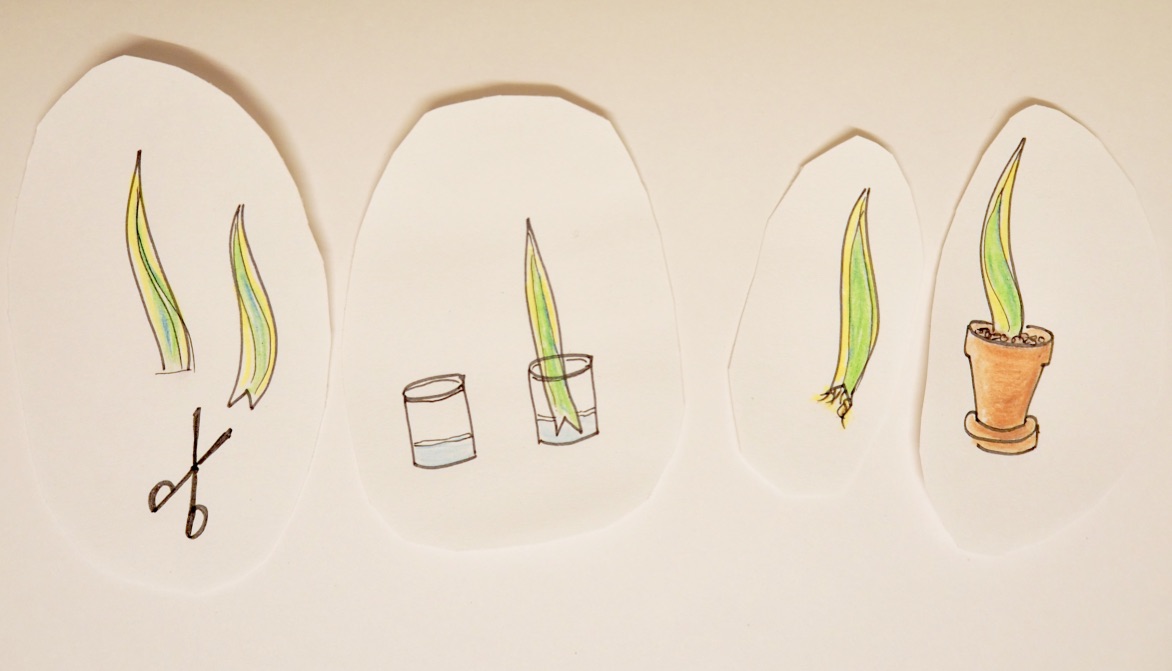
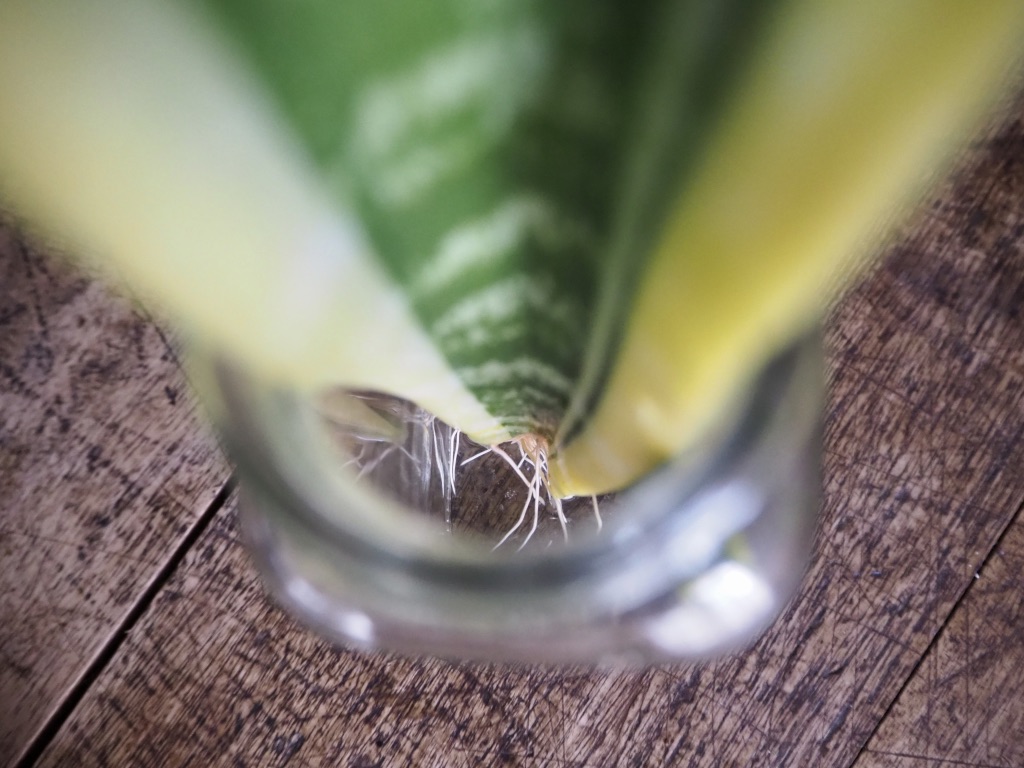
The progress on the December 1st:
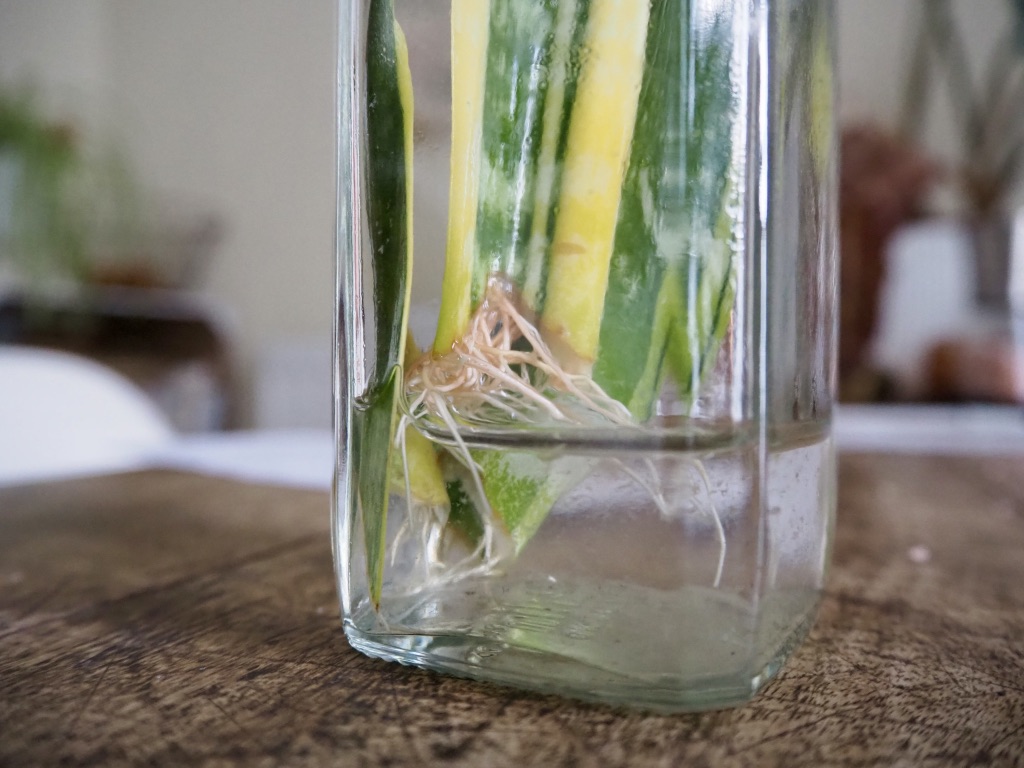
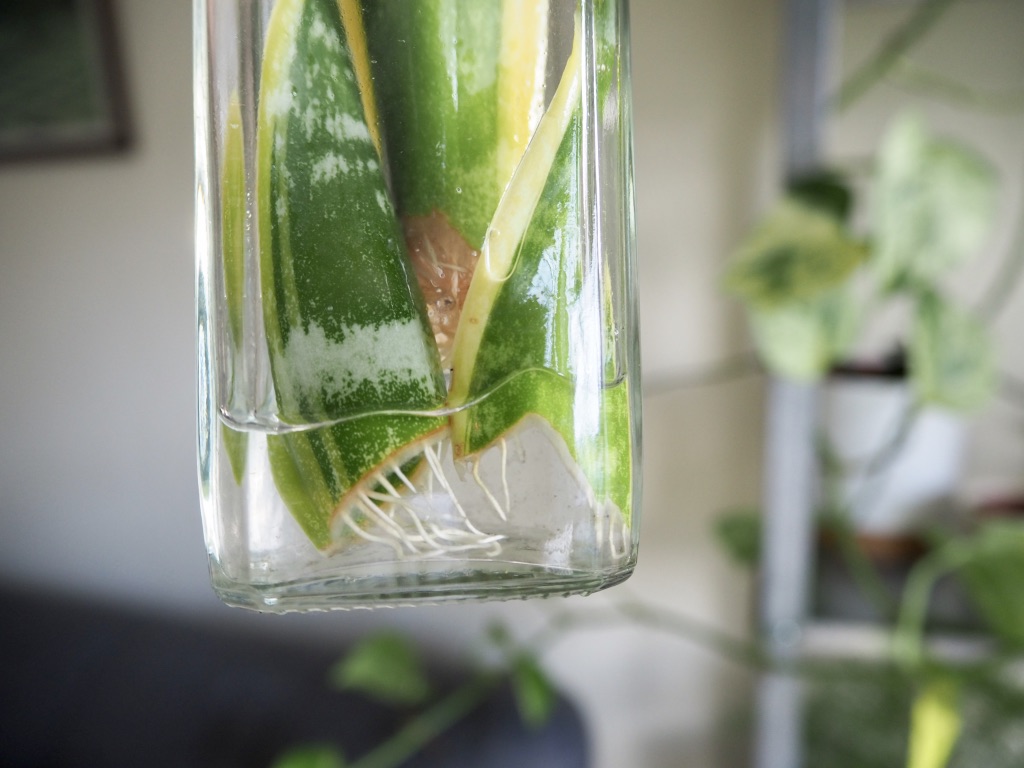
+ on January 4th:


January 9th:
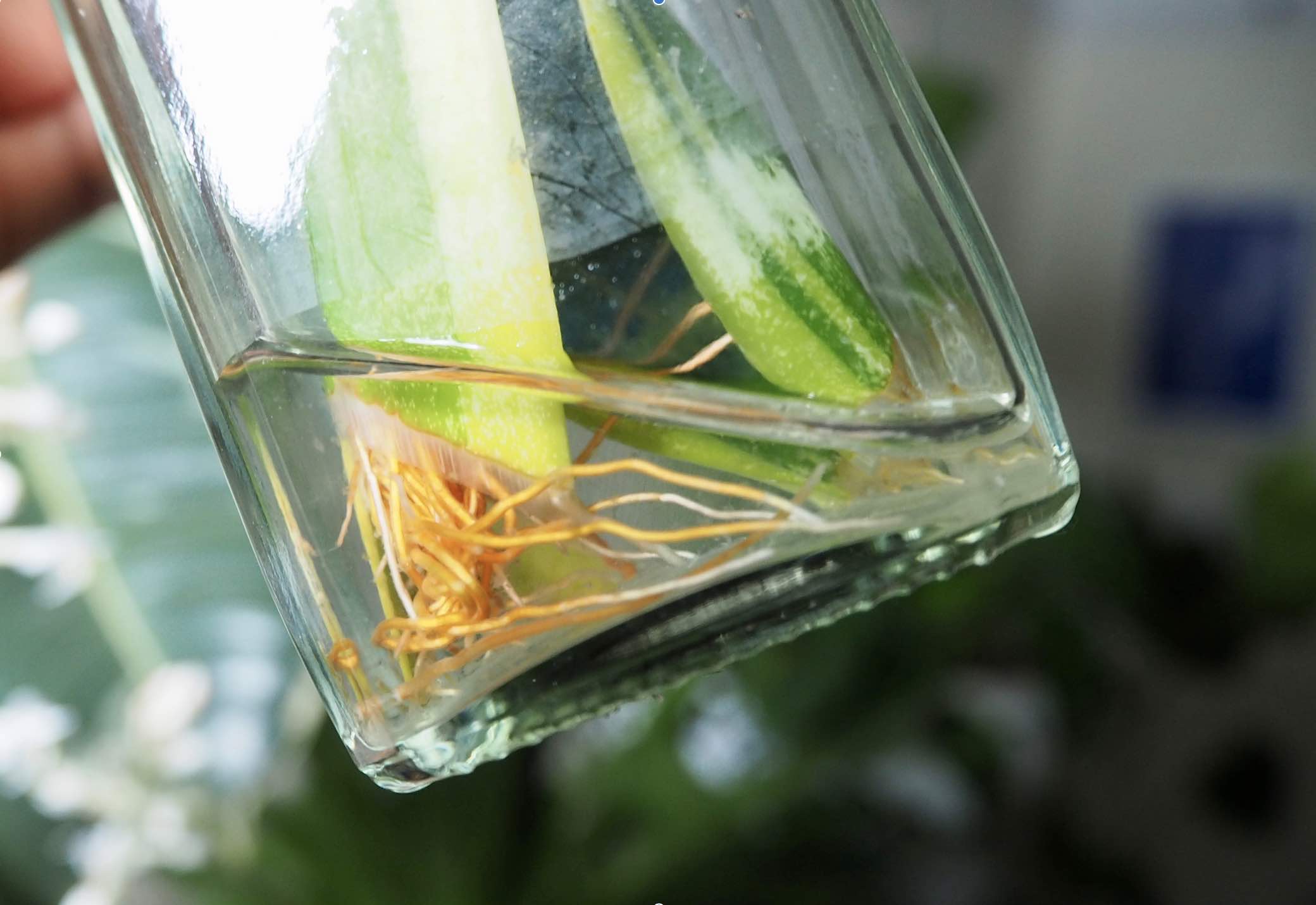
you get the idea – it’s a sloooowwwww process!


Here are my most recent snake plant propagations from my instagram post : Sept 2020
Zamioculcas zamiifolia propagation
If you thought snake plants took their time to root, then let me test your patience even further with ZZ plants. I have had a stem cutting of my ZZ raven in water, which has been rooting for…almost a year.


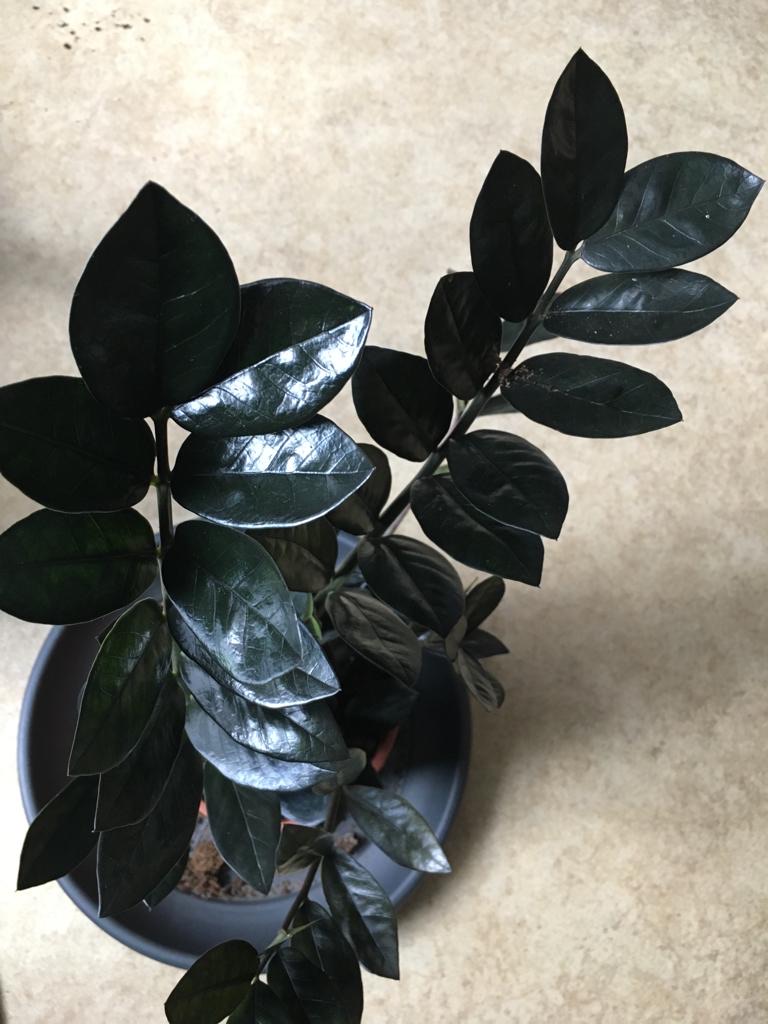

Roots on my ZZ raven stem cutting after nearly 12 months:

How to take stem cuttings of your ZZ plant:
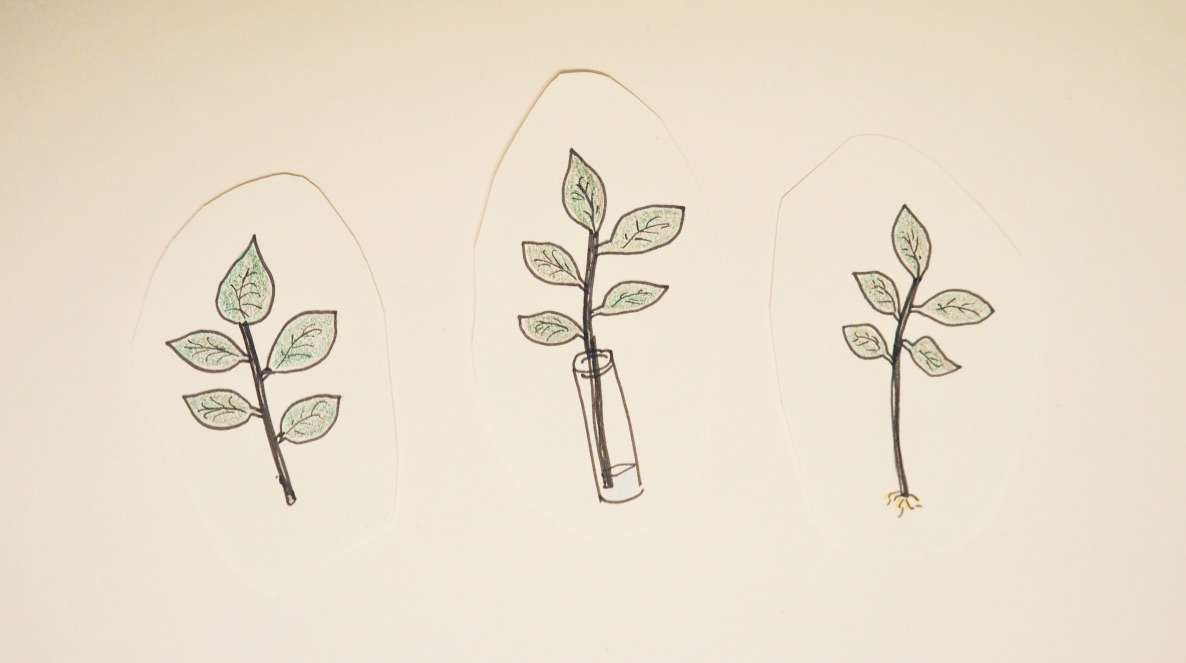
If you are in the mood for an alternative method, you can also propagate Zamioculcas zamiifolia leaves by placing them in potting mix (mix in some perlite) — they will grow tubers over time under the surface and eventually roots will form like this:

I planted my stem in with my main plant, here’s a photo of it in September 2020:

HPH Tips for successful propagations:
- First of all, it’s best to use healthy stems for propagations!
- When cutting your stem, use a sharp, clean blade and leave to callus over on a paper towel. For snake plants, cutting in an inverted V [^] shape will provide a larger surface area for the stem to grow roots. Some plant stems like philodendrons will ‘bleed’ — don’t be alarmed by this!
- Make sure to keep out of direct sunlight at this stage.
- After 5-7 days, the end of the stem should have ‘sealed over’ + dried… this is when you want to place into water. I like to use old jam jars etc for things like Snake plants + ZZ’s as the wide neck of the vessel holds the stem up nicely. Otherwise, I have a hefty collection of vintage glassware that make excellent propagation vessels.
- Keep in a bright, indirect spot – all my propagations are on a shelf that is approximately 1 metre away from my south facing window.
- Change the water when you remember — ideally once every 7-10 days.
- Be patient + almost forget about them!
- Pot when roots are a few cm’s long — I generally use a a free draining houseplant potting mix with added bark + perlite.
- I prefer to use a small-ish pot + as the plant grows, will do a number of small re-pots, instead of planting in a pot that is too big. This can sometimes lead to root rot if the plant is overwatered at this stage + I find growth is a bit quicker too.
- Water in the cutting when planted + if you can also increase humidity at this point, it can help the plant adapt from water to soil. There’ll be a process of adjustment as water roots are different to soil roots, but I’ve not had any trouble transitioning my plants so far.
Other plants I like to propagate
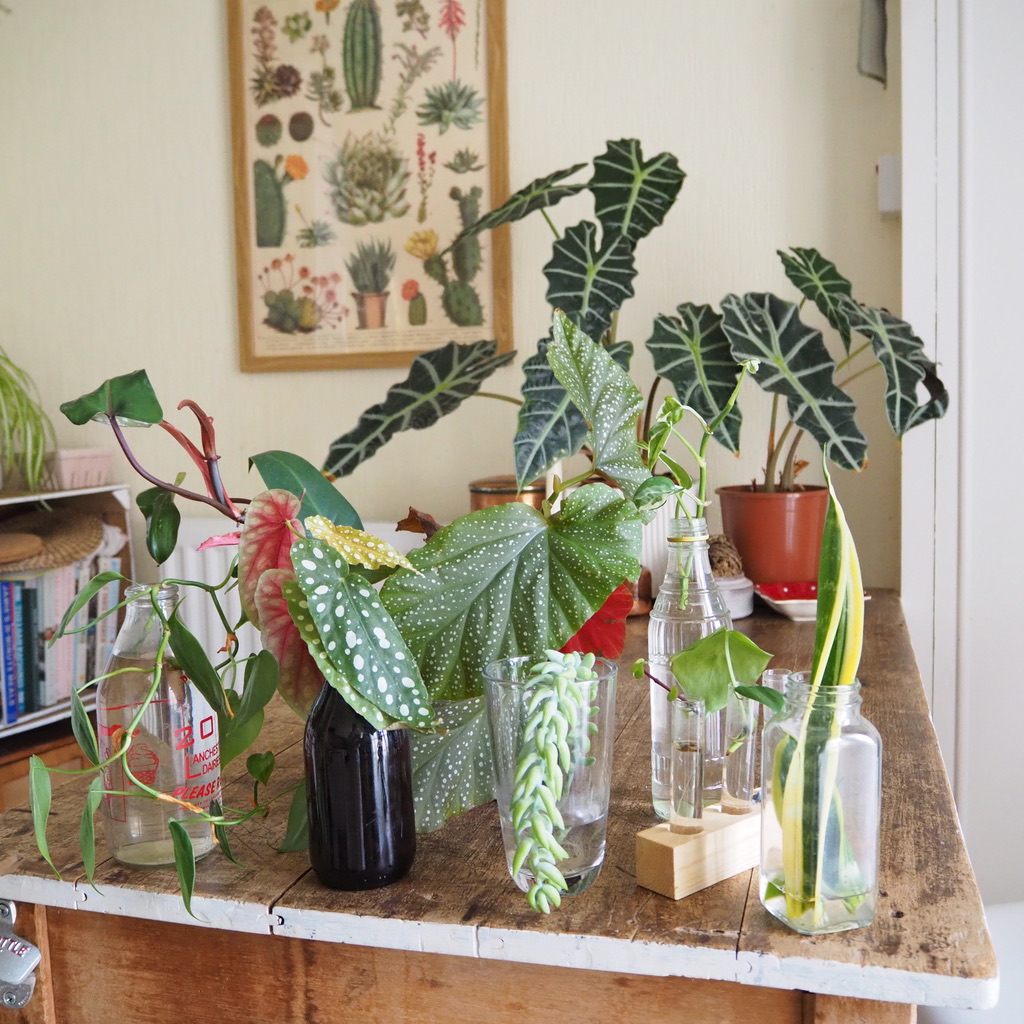

A plant I always root over winter is my Tradescantia fluminensis tricolour (above) because it has a tendency to get a bit crispy as the delicate thin foliage has the dry-air-central-heating-hell to contend with. These stems can live happily in water for quite a while which is much appreciated. I’ve got a blogpost about this specific process here if you want to learn more.
Of course, the plant that is always propagating here at HPH is the pilea family, my main plant has got to that stage where pups are coming thick and fast!
Hope this has been helpful for those of you that fancy a bit of a propagation experiment. If you are interested in succulent propagation there is a post all about that here. If you also share your plants on instagram + want to share your propagation experiments then use my hashtags #houseplanthouse #propagatewithme.


Leave a Reply